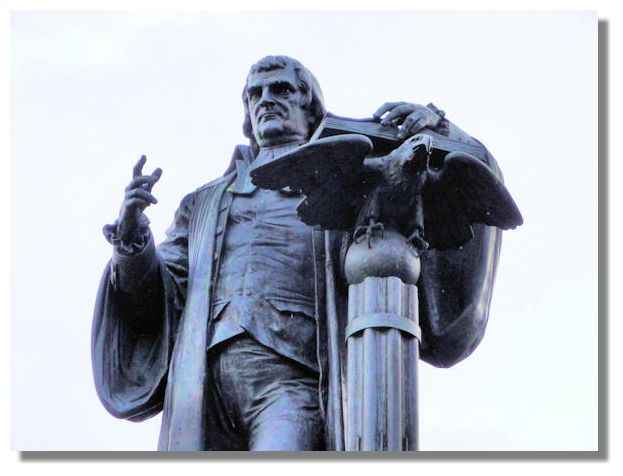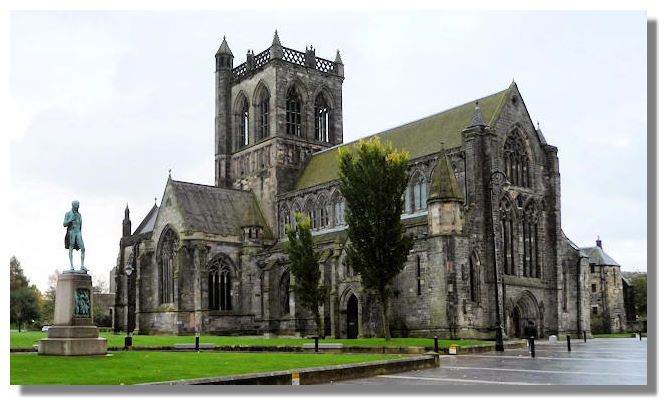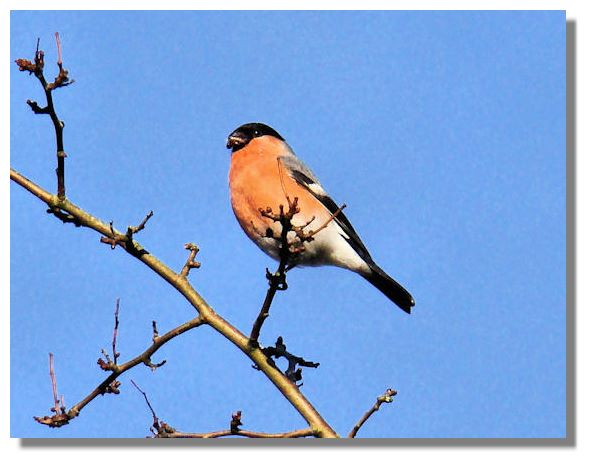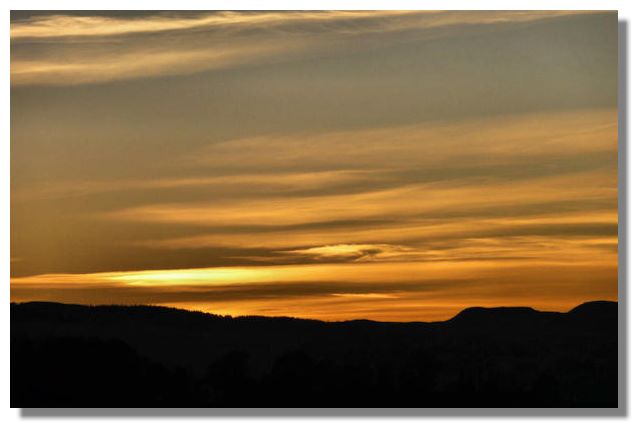The Rampant Scotland Newsletter includes a number of photographs which illustrate the weather and the seasons, plus the flora and fauna of the current week around Scotland. This separate "colour supplement" displays some more pictures, in a larger format. Here is this week's crop of Scottish views!
An ancestor of John Witherspoon (1723-1794) was John Knox, who had been a major force in the Reformation of the church in the middle of the 16th century. Witherspoon also became a minister. He was a brilliant orator and was "head hunted" by a number of churches in Scotland (and abroad) before moving to Paisley - where this striking statue is located. He was persuaded by letters from Benjamin Franklin in 1768 to become president of the College of New Jersey (later Princeton University). Witherspoon was soon supporting the independence fight in America and became what in today's politics would be regarded as a senator. When some of the delegates from the thirteen American colonies gathered to decide whether to break completely with Britain expressed hesitation, it was Witherspoon who urged them to sign the Declaration of Independence, saying "There is a tide in the affairs of men, a nick of time. We perceive it now before us. To hesitate is to consent to our own slavery." After leaving Congress in 1782, Witherspoon was involved in the rebuilding of Princeton College (destroyed during the war). He was its President from 1768 until his death in 1794. For more on Witherspoon, see Famous Scots - John Witherspoon.
The charter to establish the priory at Paisley, seven miles from Glasgow, was signed in 1163 by Walter FitzAlan, in Fotheringay Castle in England. The priory, which was sited on a church founded by St Mirin around 560AD, was raised to the status of abbey in 1245. Six generations of the FitzAlans were the hereditary High Stewards of Scotland. Walter, the sixth to hold the office, married Marjory, daughter of Robert the Bruce in 1315. Marjory died within a year of the marriage, following a riding accident but her baby was born by a crude form of caesarean section and became Robert II, the first of the Stewart monarchs. All six of the High Stewards are buried in Paisley Abbey and Marjory's tomb is in the Abbey too. In succeeding centuries, fires and the collapse of a tower caused considerable damage and parts of the abbey lay open to the skies for 350 years. It was not until the 19th century that it was re-roofed and a number of walls were restored.
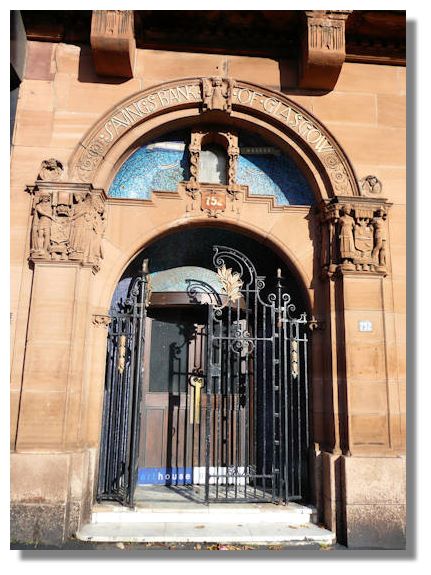
This is the entrance to what was the second branch of the Savings Bank of Glasgow (now part of the history of Lloyds TSB plc) at 752 Argyle Street, Cranstonhill, which was completed in 1900. It has been described as "one of the finest and most delicately ornamented Glasgow-Style buildings in the city." The sculptures represent the arms of both Scotland and Glasgow - supported by medieval maidens and knights, and figures of St Andrew, the Patron Saint of Scotland, and St Mungo (holding a bell), the founder and Patron Saint of Glasgow. The inscriptions at their feet are inscribed with "Nemo Me Impune Lacessit" (the royal motto translated as "no one provokes me with impunity") and the civic motto "Let Glasgow Flourish." The decoration continues with a colourful, blue, mosaic tympanum (a semi-circular or triangular decorative wall surface over an entrance) with a representation of a peacock.
The Bullfinch is about the same size as a House Sparrow, but often looks bigger than that with its large head, thick neck and plump body. The adult male (seen here) has rose pink chest and the upper feathers are grey. It is a shy, secretive bird and feeds on buds and berries and can often be seen in springtime tucking into the buds of emerging cherry blossom.
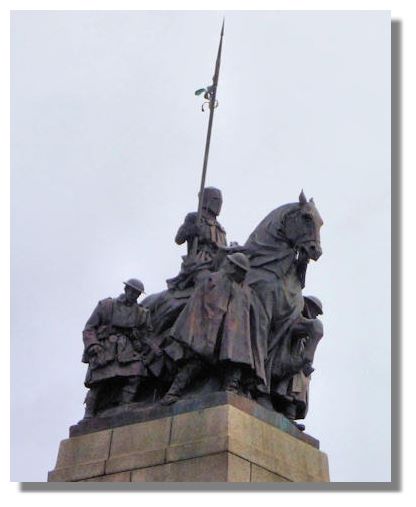
It is at this time of year that ceremonies are held around the world at war memorials to remember those who gave their lives for their country in conflicts from the First World War (the "war to end wars") onwards. Many of these memorials, such as this one in the centre of Paisley, are impressive affairs. The armoured crusader on a charger is flanked by four infantrymen, trudging through mud. The shield and pennant of the knight bear the cross of St Andrew. The tall granite pedestal on which the sculpture stands bears the names of the countries from both World Wars in which men and women from Paisley fought. The inscription reads: "1914-1919 - to the glorious memory of the 1,953 men of Paisley gave their lives in the Great War and in grateful remembrance of the men and women of this burgh who gave their lives for their country in the World war 1939-1945."
Regular readers of this colour supplement will be aware of the many pictures of sunsets which have been included here. This is one of the times of year when they are more likely to be seen - this one was taken near Loch Leven in Perth and Kinross, earlier this week.If you want to look back at earlier editions of this Colour Supplement, there is an Index Page
